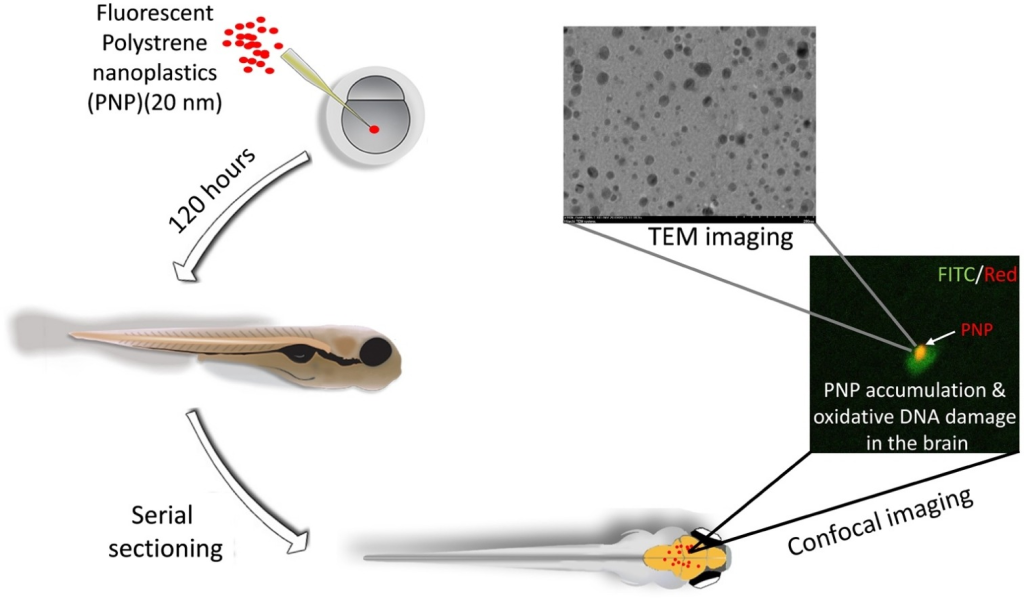
Polystyrene nanoplastics (20 nm) are able to bioaccumulate and cause oxidative DNA damages in the brain tissue of zebrafish embryo (Danio rerio)

Teoman Özgür Sökmen, Ekrem Sulukan, Medine Türkoğlu, Alper Baran, Mustafa Özkarac, Saltuk Buğrahan Ceyhun, Neurotoxicology 77, 51-59.
Nano-sized plastic particles formed from both daily use plastics and its debris have become a potential health and environmental problem due to features such as transportation through food webs and maternal transfer.Although many studies on the toxicity of plastics exist more detailed and molecular studies are needed to evaluate and review the e ects of plastics especially in nano-size range. For this purpose, we have microinjected polystyrene nanoplastics (PNP) (20 nm) to the zebra sh embryo, which is one of the best model organisms for developmental toxicity studies, to simulate intake with food or maternal. Survival, hatching and malformations evaluated during the experimental period (120 h). Moreover, we have aimed to put forth the presence of reactive oxygen species (ROS) and apoptosis signaling accumulation in the body in addition to bioaccumulation of PNP and immunochemical toxicity (8-OHdG) on the brain of zebra sh larvae at the 120th hour. According to results, it has been demonstrated that 20 nm diameter PNP can reach the brain and bioaccumulate there, moreover leadto oxidative DNA damage in the brain regions where it bioaccumulates. Here we have also imaged the PNP froma vertebrate brain via transmission electron microscopy (TEM) for the rst time. As a result of these, it has been detected increasing mortality and prevailing abnormalities in addition to excessive ROS and apoptosis inespecially the brain. As a conclusion, obtained data have suggested that precautions, on the use and contamination of the plastic product, to be taken during both pregnancy and baby care/feeding are important for the health of the baby in future.
- This paper includes PhD thesis of Teoman Özgür SÖKMEN
- Corresponding author at: Atatürk University, Fisheries Faculty, Aquaculture Department, Erzurum, 25240, Turkey.
E-mail address: saltukceyhun@hotmail.com (S.B. Ceyhun).
https://doi.org/10.1016/j.neuro.2019.12.010
Received 29 July 2019; Received in revised form 6 November 2019; Accepted 16 December 2019
Available online 17 December 2019
0161-813X/ © 2019 Elsevier B.V. All rights reserved.
